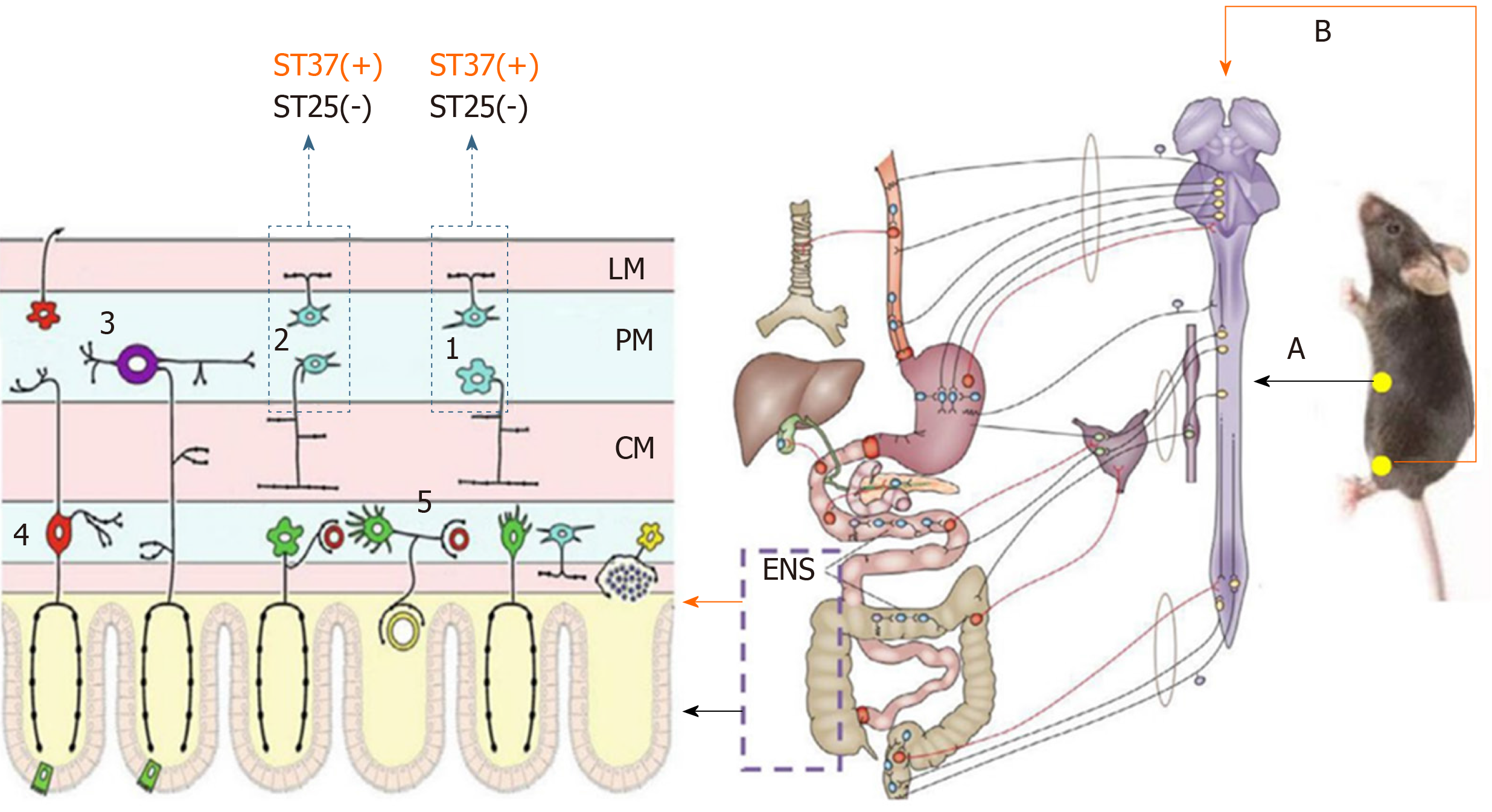Copyright
©The Author(s) 2020.
World J Gastroenterol. Jun 21, 2020; 26(23): 3182-3200
Published online Jun 21, 2020. doi: 10.3748/wjg.v26.i23.3182
Published online Jun 21, 2020. doi: 10.3748/wjg.v26.i23.3182
Figure 1 Regional-specific effect of acupuncture on gastrointestinal motility and its autonomic nervous system mechanism.
Stimulating the abdominal acupoints inhibits gastric/duodenal/jejunal motility by increasing sympathetic efferent fiber activity; and stimulating acupoints in the limb facilitates motility by exciting vagal efferent fiber activity. The effect of abdominal acupoints on gastrointestinal motility could be attenuated by sympathectomy or deletion of the gene encoding the β1&2 receptor. The effect of limbic acupoints on gastrointestinal motility could be attenuated by vagotomy or M2&3 receptor gene knock out.
Figure 2 The enteric nervous system mechanism of acupuncture.
Stimulation at ST37 and ST25 had different effects on colonic motility in terms of the effects on excitatory and inhibitory neurons in the enteric nervous system. A: Sympathetic pathway; B: Parasympathetic pathway; 1: Inhibitory neurons; 2: Excitatory neurons; 3: Myenteric intrinsic primary afferent neurons; 4: Submucosal intrinsic primary afferent neurons; 5: Secretomotor/vasodilator neurons; LM: Longitudinal muscle; MP: Myenteric plexus; CM: Circular muscle; (+): Effective, (−): Ineffective[72]; ENS: Enteric nervous system.
- Citation: Yu Z. Neuromechanism of acupuncture regulating gastrointestinal motility. World J Gastroenterol 2020; 26(23): 3182-3200
- URL: https://www.wjgnet.com/1007-9327/full/v26/i23/3182.htm
- DOI: https://dx.doi.org/10.3748/wjg.v26.i23.3182










